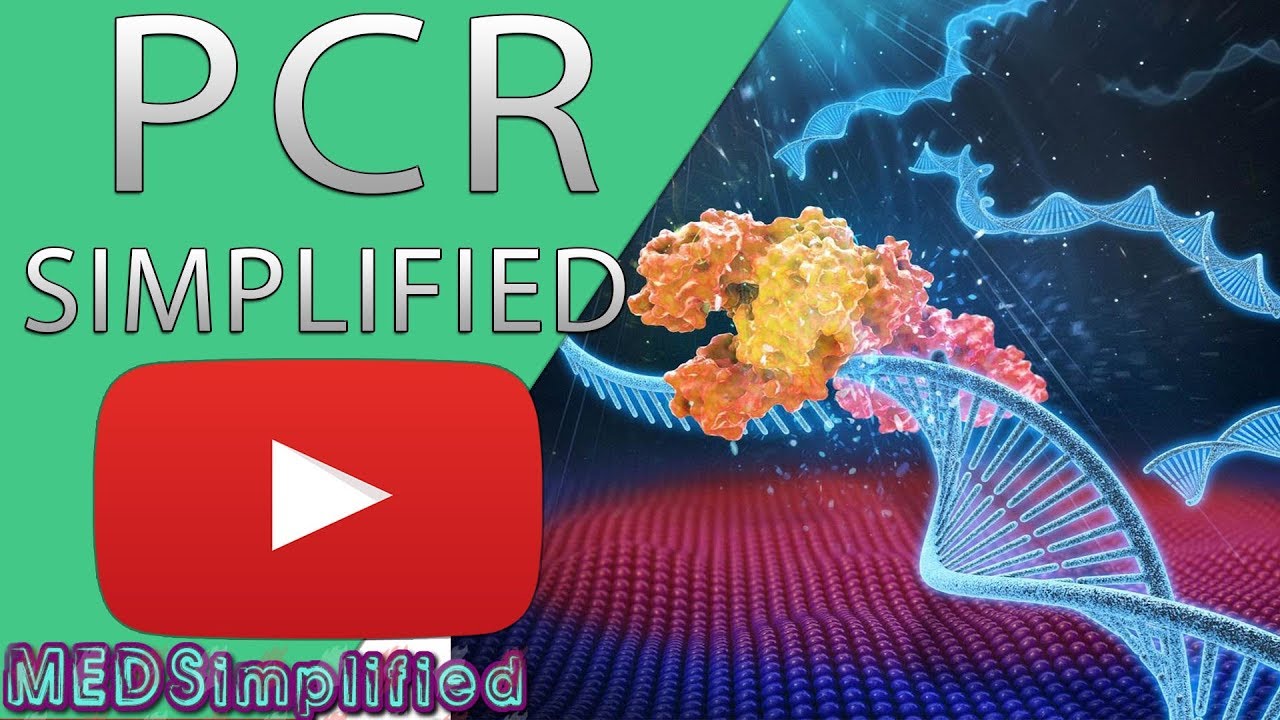PCR
Summary
TLDRThis video explains the process of Polymerase Chain Reaction (PCR), a technique used to make numerous copies of a specific DNA segment. Developed in 1983 by Dr. Kary Mullis, PCR amplifies DNA, making it useful in fields like forensics, disease diagnosis, and genetic research. The process involves three key stages: denaturation, annealing, and extension, which are repeated to create millions of copies. The video also highlights the role of PCR in medical applications, including gene cloning, drug production, and virus detection, with a special focus on RT-PCR for RNA to DNA conversion.
Takeaways
- 😀 PCR (Polymerase Chain Reaction) is a biotechnology technique used to amplify small segments of DNA.
- 😀 PCR allows scientists to generate millions of copies of DNA from even a small sample, which is crucial for applications like DNA fingerprinting.
- 😀 The PCR method was developed in 1983 by Dr. Kary Mullis, who won the Nobel Prize in Chemistry in 1993 for this innovation.
- 😀 The key ingredients of PCR include a DNA template, primers, DNA polymerase, nucleotides, and a suitable chemical mix.
- 😀 PCR involves three stages: denaturation, annealing, and extension, each repeated 25 to 40 times to amplify DNA.
- 😀 Denaturation separates the double-stranded DNA into two single strands by heating the sample to 94°C.
- 😀 Annealing allows primers to bind to the exposed DNA strands at a lower temperature (50-60°C), preparing them for replication.
- 😀 Extension is where DNA polymerase adds complementary bases to the exposed single-stranded DNA, creating copies.
- 😀 Real-time PCR (qPCR) and reverse transcription PCR (RT-PCR) are advanced types of PCR that allow for quantitative analysis and RNA detection, respectively.
- 😀 PCR has wide applications in medicine, such as diagnosing diseases, identifying pathogens, and producing recombinant proteins for drug production.
Q & A
What is the primary purpose of PCR (Polymerase Chain Reaction)?
-The primary purpose of PCR is to make many copies of a small section of DNA, a process known as amplification. This allows scientists to study specific DNA segments in detail, even from a very small initial sample.
Who developed PCR and what recognition did they receive for it?
-PCR was developed by Dr. Kary Mullis in 1983, and he was awarded the Nobel Prize in Chemistry in 1993 for his groundbreaking work in developing this method.
What are the key ingredients required for PCR?
-The key ingredients for PCR include a DNA template, primers, DNA polymerase (such as Taq polymerase), DNA nucleotides (adenine, cytosine, thymine, guanine), and a buffer solution to maintain the correct chemical environment.
Why is Taq polymerase used in PCR?
-Taq polymerase is used in PCR because it is a heat-resistant enzyme derived from thermophilic bacteria. It can withstand the high temperatures required during PCR to denature DNA without being deactivated.
What are primers in PCR, and why are two different primers needed?
-Primers are short, single-stranded pieces of DNA that are designed to bind to specific regions on the target DNA. Two primers are required: a forward primer to bind to the beginning of the target sequence and a reverse primer to bind to the end of the sequence. This helps ensure that only the desired section of DNA is amplified.
Can PCR amplify the entire DNA molecule, or just specific sections?
-PCR amplifies only specific sections of the DNA molecule. The primers are designed to target specific sequences, so only the DNA between the forward and reverse primers is copied.
What happens during the denaturation stage of PCR?
-During the denaturation stage, the DNA sample is heated to around 94°C, which causes the hydrogen bonds between the two strands of DNA to break, separating them into two single strands.
What occurs during the annealing stage of PCR?
-In the annealing stage, the temperature is lowered to around 50-60°C, allowing the primers to bind or 'anneal' to their complementary sequences on the single-stranded DNA templates.
What role does DNA polymerase play in PCR's extension phase?
-During the extension phase, DNA polymerase (such as Taq polymerase) binds to the primers and adds complementary nucleotides to the exposed single strands of DNA, effectively building a new strand of DNA.
How many cycles are typically required in PCR, and what is the result of each cycle?
-PCR typically involves 25 to 40 cycles. Each cycle consists of denaturation, annealing, and extension. After each cycle, the amount of DNA doubles, leading to millions of copies of the targeted DNA sequence after multiple cycles.
What is the difference between conventional PCR and RT-PCR?
-Conventional PCR amplifies DNA directly, while RT-PCR (Reverse Transcription PCR) is used to amplify RNA. In RT-PCR, RNA is first converted into complementary DNA (cDNA) using an enzyme called reverse transcriptase before proceeding with the PCR amplification.
Outlines

此内容仅限付费用户访问。 请升级后访问。
立即升级Mindmap

此内容仅限付费用户访问。 请升级后访问。
立即升级Keywords

此内容仅限付费用户访问。 请升级后访问。
立即升级Highlights

此内容仅限付费用户访问。 请升级后访问。
立即升级Transcripts

此内容仅限付费用户访问。 请升级后访问。
立即升级浏览更多相关视频

Polymerase chain reaction (PCR) | Biomolecules | MCAT | Khan Academy

Basic Molecular Biology: PCR and Real-Time PCR – Principle of PCR

Basic Concepts 01 - Polymerase Chain Reaction (PCR)

Polymerase Chain Reaction (PCR)

PCR (Mesin fotocopy DNA) - bioteknologi modern - biologi sma kelas 12

PCR - Polymerase Chain Reaction Simplified
5.0 / 5 (0 votes)
